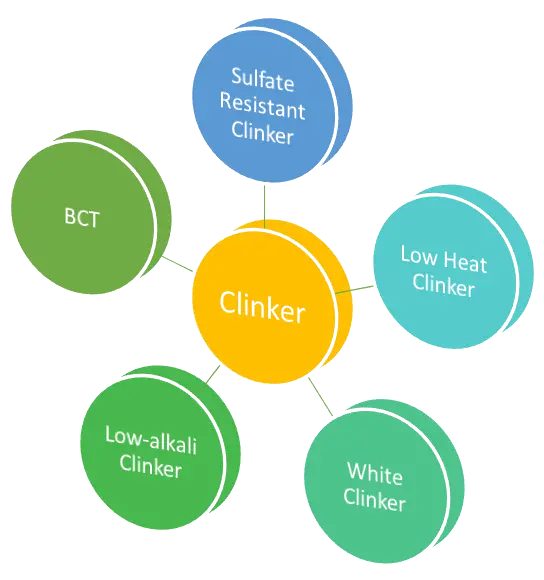Introduction to Clinker
In the article “Introduction to Clinker,” we mentioned the different types of Clinker. In this article, we talk more about the main components of Clinker and the different types of Clinker, as well as the results from different percentages of Clinker’s main components.
The four main and important components of Clinker are:
- ALITE: Tricalcium Silicate C3S is typically about 65% of the total.
- BELITE: Dicalcium Silicate C2S is typically about 15% of the total.
- ALUMINATE: Tricalcium Aluminate C3A is typically about 7% of the total.
- FERRITE: Tetra calcium Aluminoferrite C4AF is typically about 8% of the total.

Types of Clinker
The most common type of Clinker is produced for Portland cement and its blends. The types of Clinker vary depending on the type of cement for which the Clinker is produced. Aside from the Portland cement blends, some special types of cement clinker are listed below:
- Sulfate Resistant Clinker
- Low Heat Clinker
- White Clinker
- Low-alkali Clinker
- Belite Calciumsulfoaluminate Ternesite (BCT)
Sulfate Resistant Clinker
It typically includes 76% Alite, 5% Belite, 2% Tricalcium Aluminate, 16 % Tetracalcium Aluminoferrite, and 1% free Calcium Oxide. Although its production has decreased in the last few years since Sulfate resistance can simply be gained by using Granulated Blast Furnace Slag (GBFS) in cement manufacture
Low Heat Clinker
It typically includes 29% Alite, 54% Belite, 2% Tricalcium Aluminate and 15% Tetracalcium Aluminoferrite, with very little Free Lime. It is no longer produced since cement produced from ordinary Clinker and Ground Granulated Blast Furnace Slag (GGBFS) has exceptional low heat features.
White Clinker
It includes 76% Alite, 15% Belite, 7% Tricalcium Aluminate, no Tetra calcium Aluminoferrite, and 2% free lime. Nonetheless, the compound may vary extensively.
White Clinker is used in the production of white cement, which is used to achieve artistic targets in construction.
Low-alkali Clinker
When the amount of Total Alkalies is less than <0.6, It is appropriate for the production of Low Alkali Cement, Cement types I, II and V.
Also, it helps concrete resist the alkali silica response and is mainly used in structures that need to be moisture-resistant, such as airports, runways, and dams.
Belite Calcium sulfoaluminate Ternesite (BCT)
This perception is used in manufacturing a type of Clinker with up to 30% less carbon dioxide release. Energy efficiency advances, and the electricity charges for the manufacturing procedure are about 15% less as well.